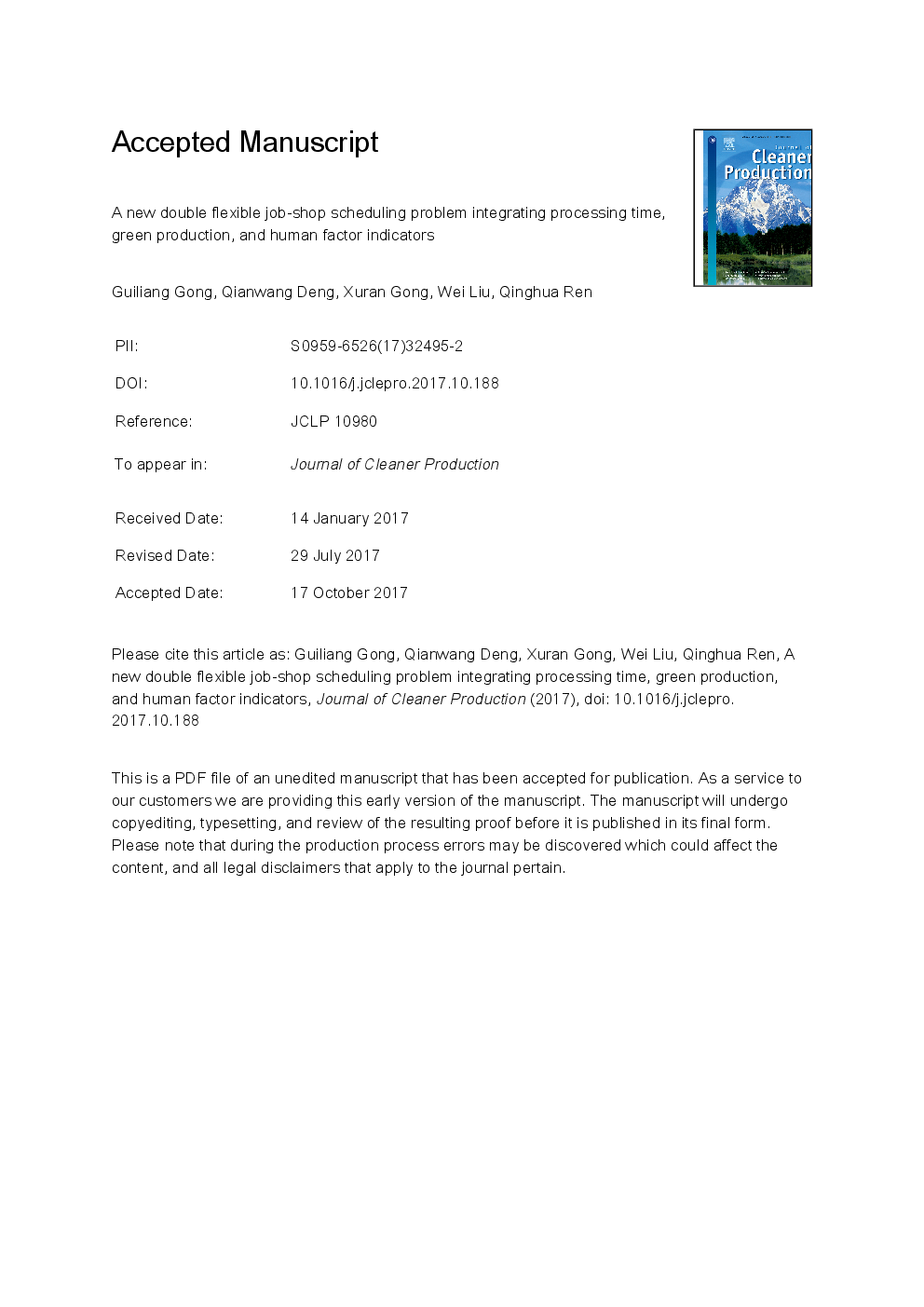ترجمه فارسی عنوان مقاله
یک برنامه جدید دوبعدی انعطاف پذیر برای کار زمانبندی یکپارچه سازی زمان پردازش، تولید سبز و شاخص های شاخص انسانی است
عنوان انگلیسی
A new double flexible job-shop scheduling problem integrating processing time, green production, and human factor indicators
| کد مقاله | سال انتشار | تعداد صفحات مقاله انگلیسی |
|---|---|---|
| 105572 | 2018 | 30 صفحه PDF |
منبع

Publisher : Elsevier - Science Direct (الزویر - ساینس دایرکت)
Journal : Journal of Cleaner Production, Volume 174, 10 February 2018, Pages 560-576
ترجمه کلمات کلیدی
دو بار انعطاف پذیری برنامه زمانبندی فروشگاه، شاخص های تولید سبز، عوامل انسانی، بهینه سازی چند هدفه، الگوریتم ژنتیک ترکیبی،
کلمات کلیدی انگلیسی
Double flexible job shop scheduling problem; Green production indicators; Human factors; Multi-objective optimization; Hybrid genetic algorithm;

